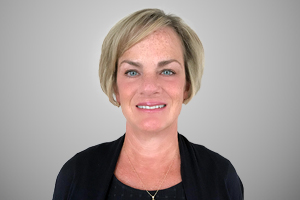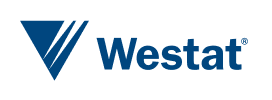This website uses cookies so that we can provide you with the best user experience possible. Cookie information is stored in your browser and performs functions such as recognizing you when you return to our website and helping our team to understand which sections of the website you find most interesting and useful.
Residents of Jefferson County, Kentucky, where Louisville is located, have higher rates of exposure to the SARS-CoV-2 virus and antibodies than expected, according to data from the Co-Immunity Project’s first wave of community-wide testing. The University of Louisville is leading the study with Westat providing survey sampling and coordinating expertise. The study is providing a real-time snapshot of the spread of the virus in the community, as well as useful insights into fielding data collection during a pandemic.
Data show that the population had 4 to 6 times higher rates of exposure than previously detected. Those data also indicated 0.05% of the tested population had an active infection and 4% had antibodies.
This first wave of testing was conducted June 10-19, 2020, at 5 testing sites in various areas of Jefferson County. Five additional waves are planned, the next in September, and will shed light on the rapidly changing nature of the virus community spread.
“We ramped up activities in record time this spring,” notes Mary Dingwall, a Westat Senior Study Director and project director. “The project kick-off meeting was held in the third week of April, and Westat was field ready by May 15.” Within that time, Westat designed and implemented an address-based sampling plan (oversampling for the non-White population in regions of the county with higher rates to ensure representation), and developed recruitment, screening (web and hard-copy), and nonresponse follow-up materials.

Of the 18,000+ households sampled, 1,409 responded to the screener survey, a response rate of 8%. Out of those, 569 (40%) completed the next steps of consent, scheduling for testing, and completing a brief health questionnaire. Of those scheduled for testing, 509 (90%) were tested.
“A few days into data collection, we noticed that the percentage of households that completed the screener was lower than anticipated,” notes Ms. Dingwall. “We quickly released an additional sample, acknowledging that those households would have a very narrow window to respond to the screener. The study swiftly pivoted outreach activities to social media and harnessed the help of community organizations in a campaign to recruit a volunteer sample.”
More than 1,700 volunteers responded, bringing the number tested to just over 2,230. “We were able to quickly adjust course to meet study demands,” says Ms. Dingwall. All participants visited the testing sites and submitted to a nasal swab to detect exposure to the virus, and a finger prick test to detect antibodies. The University of Louisville handled the biologic sampling and contacted respondents with their results.
Unexpected Survey Research Opportunities
The challenges of fielding the study in June presented unexpected research opportunities. “This is new territory, to get people to come out to testing facilities during a pandemic,” explains J. Michael Brick, Ph.D., Westat Senior Vice President of Statistical Sciences and Research and lead statistician for the project. “Having both a probability sample and a volunteer sample provides us an opportunity to compare the two and assess the potential sources of differences.”
Westat’s research, IT, and survey methods staff continue to provide their expertise in study and instrument design to ease and enhance participation and alleviate any potential issues, says Ms. Dingwall: “There are always lessons learned from the first wave of data collection, resulting in adaptations for future rounds. For example, for Wave 2, we have increased our initial sample size as well as the time from initial mailing to testing.”
Another adaptation is to push the participants to respond online, followed by a mailing to nonrespondents, which will include a hard-copy screener. “This sequential approach typically results in higher screener response rates. This should have a positive impact on the study,” notes Ms. Dingwall.
The University has also increased the number of testing sites from 5 to 7. The locations are more widely distributed across the county, thus increasing accessibility for the community.
“Westat is well-positioned with our survey sampling and coordination expertise to conduct COVID-related research,” says Ms. Dingwall. “We have the flexibility and creativity needed to respond quickly to the needs of the study in these very challenging times.”
Read more about the project in the news:
Focus Areas
Disease Surveillance Public HealthCapabilities
Analysis and Modeling Data Collection Statistical MethodsTopics
COVID-19-
Perspective
Teacher Apprenticeships Strengthen the WorkforceJuly 2024
Many state education agencies (SEAs) are addressing teacher shortages by creating and expanding alternative paths to the teaching profession. One fast-growing option is teacher apprenticeships,…
-
Expert Interview
Passport to Careers: Aiding Foster and Homeless Young AdultsJuly 2024
The Passport to Careers program in Washington State supports former foster youth and homeless youth unaccompanied by a parent or guardian in achieving their college…
-
Perspective
Highlights of Westat at AAPOR 2024May 2024
We’ve returned from the 79th Annual American Association for Public Opinion Research (AAPOR) Conference, held May 15-17 in Atlanta, where we caught up with colleagues…

